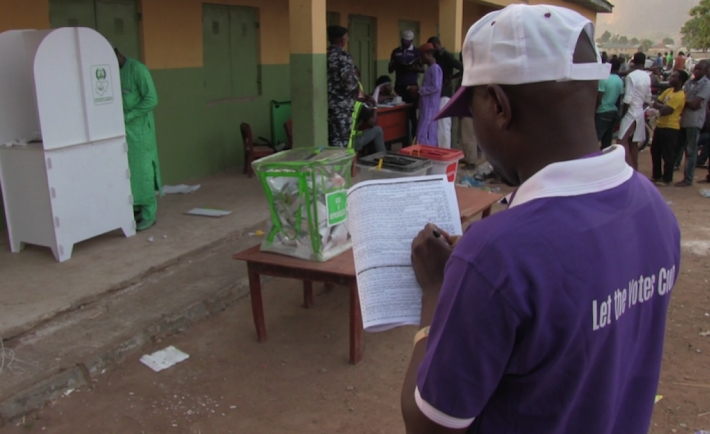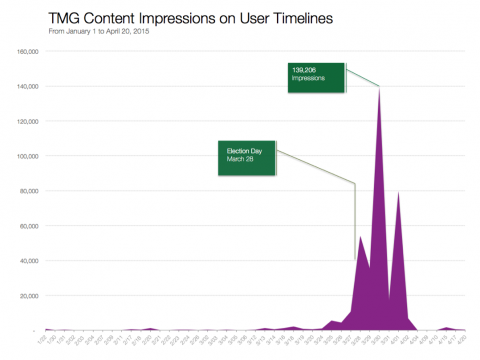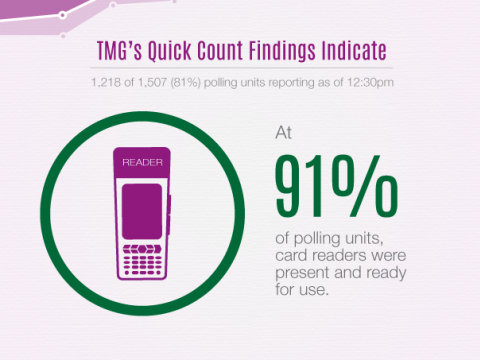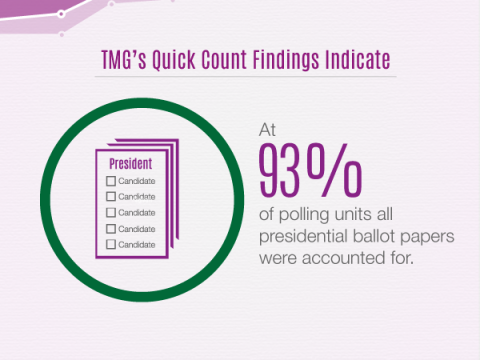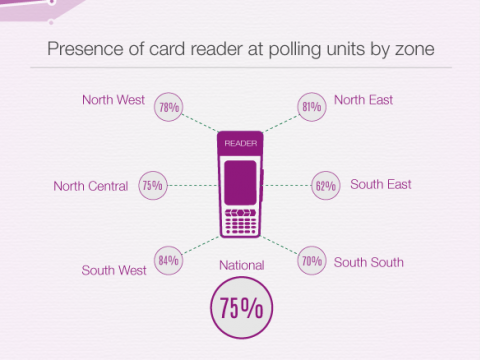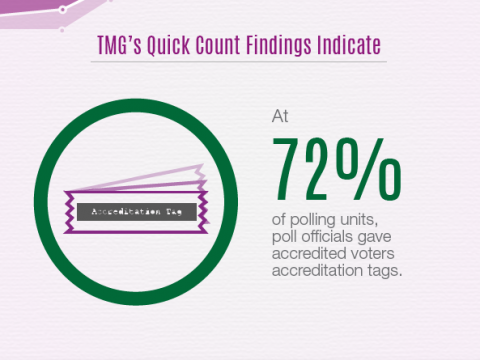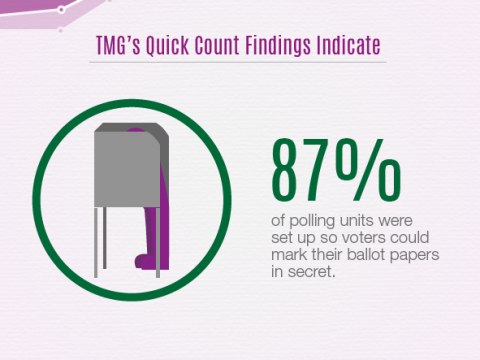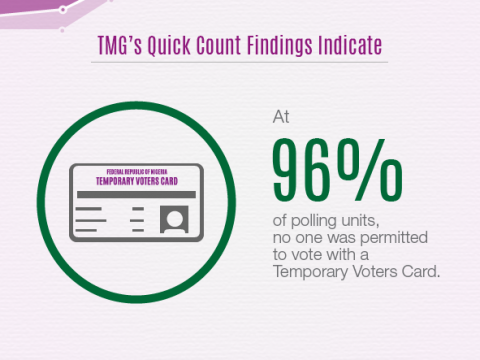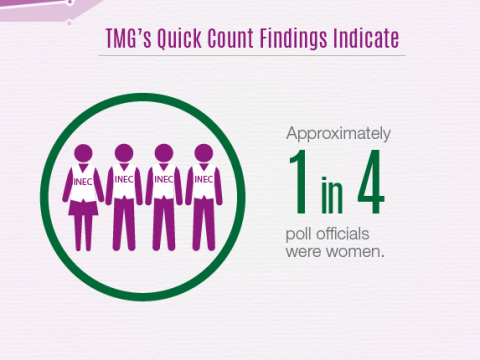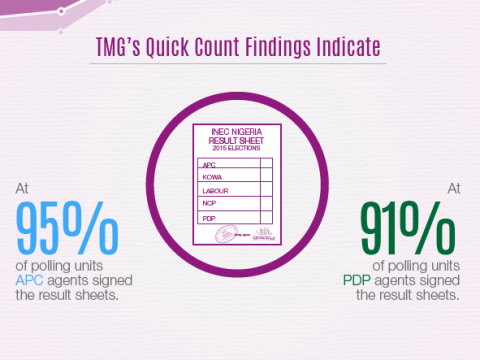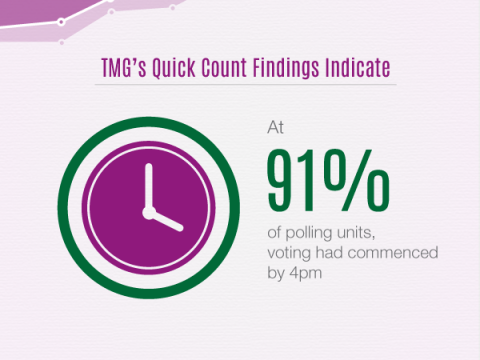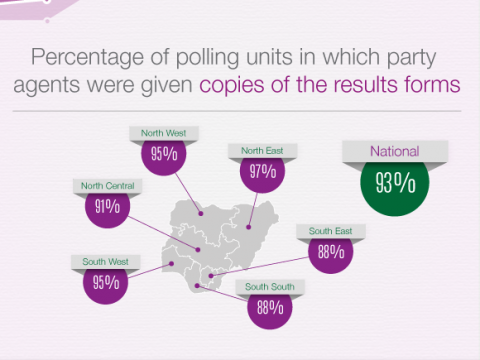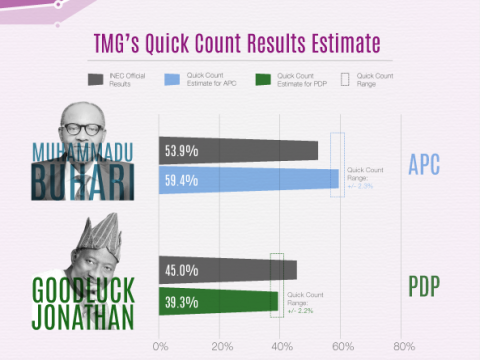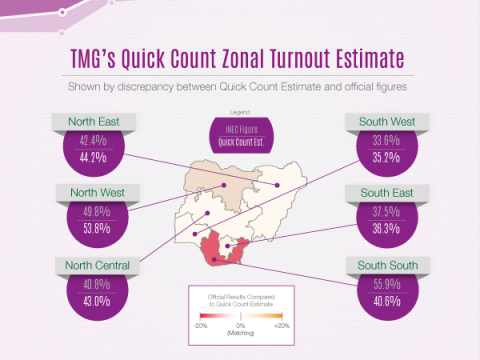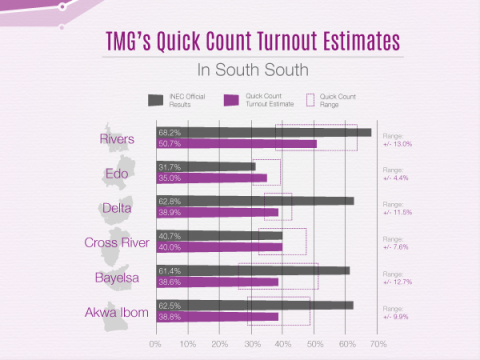Building on the successful outreach efforts of other civil society organizations (CSOs), Nigeria’s Transition Monitoring Group (TMG) put digital communication, specifically Twitter, at the core of its communication about its 2015 presidential election findings. Well-identified audiences, the use of charts and maps, and a connected population allowed TMG to get its findings in front of a significant number of interested citizens in real time.
By the numbers, Nigeria, Africa’s most populous country, is comparatively well connected. Estimates vary, but of approximately 173 million people, an estimated 50 million were online as of 2013. The country is the world’s 8th largest mobile market, with 129 million cell phone subscribers (roughly 74 percent of the population) of which nearly 66 million use web on their mobile devices. By comparison, according to the International Telecoms Union (ITU), an estimated 12 percent of Ghanaians use the Internet, as do 39 percent of Kenyans and 49 percent of South Africans. Additionally, while estimates are imprecise, the country has approximately 11.8 million Facebook users and 1.8 million Twitter users.
Twitter allows rapid conversations with audiences that seek unfiltered communication with a person or organization. When performing a quick count, an election observation methodology that independently verifies election processes and outcomes also known as a parallel vote tabulation, TMG and other CSOs have large amounts of interesting data that users can’t get anywhere else, except from an election commission. While TMG’s long-term plan was to use Twitter to build a follower base, in the short term around the election, its strategy was to prioritize rapid content distribution. As such, TMG focused on using election hashtags and targeting specific users, influential CSOs, journalists and bloggers.
As with other election communication efforts that NDI has supported, visual products such as maps and charts were widely shared by consumers of TMG content. Of the 10 tweets from @tmgng that made the most “impressions” since the start of 2015, eight had images attached. TMG’s most widely distributed tweet, determined by number of impressions on user timelines, reached over 12,300 users.The tweet showed a map depicting the presence of APC and PDP party agents at polling units across Nigeria’s six geopolitical zones. Graphic templates were created for each of the 80 questions on the quick count checklist and on election day, real data was added to make sharable infographics of the most salient of these data points.
The presence of party agents at PUs around the country #VotenotFight #NigeriaDecides #Nigeria2015 #election2015 pic.twitter.com/ZkUgdxTnj7
— TMG (@tmgng) March 28, 2015
TMG’s greatest successes came from leveraging the conversational nature of Twitter and these conversations’ rallying points, hashtags. When planning the election day Twitter strategy, the communication team agreed with TMG that most tweets would be tagged with the most popular election hashtags, #NigeriaDecides and #Nigeria2015, rather than a hashtag TMG had created for the election: #QuickCount2015. It was more effective to go where people were already congregating on Twitter.
On election day, data analysts worked closely with graphic designers in TMG’s National Information Centre to add real data to previously designed infographic templates and to create unique visualizations of quick count data, which were released throughout election day and the days following.
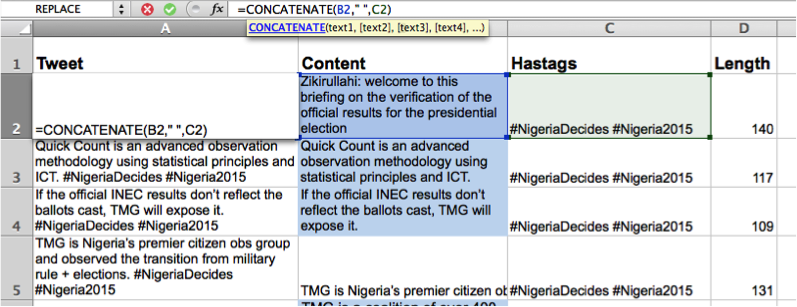 The text of TMG’s statements on the election process and verification of results and were broken down sentence-by-sentence, and with the help of a basic Excel workbook, converted into individual tweets that were distributed in real time as the TMG chair read the statements live.
The text of TMG’s statements on the election process and verification of results and were broken down sentence-by-sentence, and with the help of a basic Excel workbook, converted into individual tweets that were distributed in real time as the TMG chair read the statements live.
In the weeks on either side of election day, TMG content made over 354,600 impressions on Twitter users timelines and the group’s content was engaged with more than 9,300 times. Tweeting 114 times between March 29-30, TMG created a massive influx of original content, and because the tweets were targeted to influential audiences, this strategy brought TMG’s messages to more than 130,000 user timelines on March 30 alone.
By conducting a quick count, TMG upheld its reputation as the premier Nigerian CSO for the collection, analysis and distribution of election-related data. The group’s digital communication also generated interest among key influencers and thought leaders, including other Nigerian CSOs, Nigerian journalists, international journalists, bloggers, media figures and was also used as a forum for debate among citizens about the election.
Using Twitter is only a small component of a communications strategy, but TMG proved that it can be a useful tool for CSOs to communicate election-related findings. Combined with rapid data analysis and visualization, time-sensitive election data influence important online discussions.

